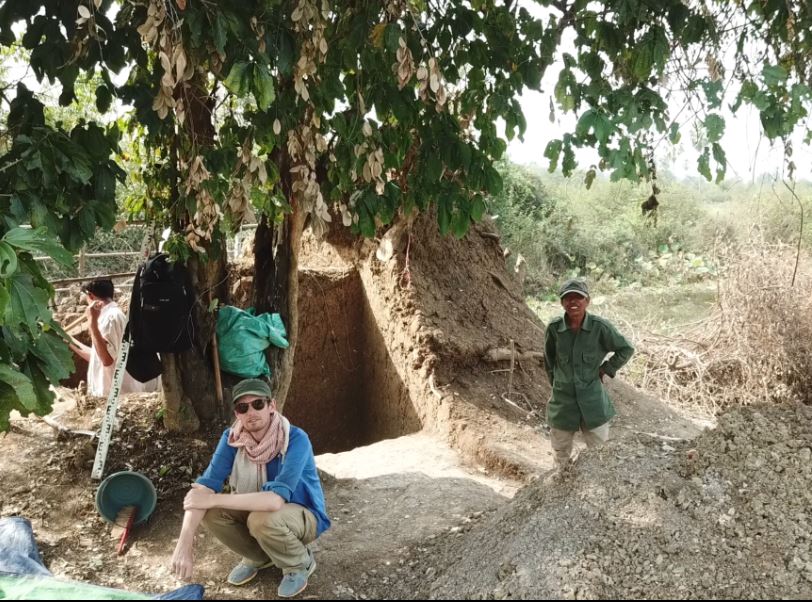
Australian archaeologists are digging deeper into the history of ancient Cambodian civilisations.
In their latest paper published in the US Proceedings of the National Academy of Sciences, the researchers have used paleo-botanical and stratigraphic data from radiometrically dated sediment cores from the 12th century walled city of Angkor Thom.
The innovative research technique shows the ancient city of Angkor underwent a gradual decline in occupation rather than an abrupt collapse, in connection with an often described foreign invasion from rivals in present-day Thailand.
Instead of a dramatic and catastrophic collapse, the University of Sydney and Flinders University researchers say the latest geoarchaeological data imply a more complex and prolonged transformation through the 15th century.
Land use was diminishing from the first decades of the 14th century CE, says Flinders University’s Dr Martin Polkinghorne, currently on location doing further excavations at the site of Srei Santhor, said to be the first capital after Angkor.
“The data suggests that the focus of power began to shift to southern urban centres more than a century before the conventional 15th century date of Angkor’s demographic demise,” Dr Polkinghorne says.
University of Sydney lead researcher on the paper, Associate Professor Dan Penny, says the new scientific evidence from the last and largest of Angkor’s walled citadels shows that the intensity of land use within the economic and administrative centre of the city declined gradually more than 100 years before the supposed collapse, implying a very different end to the city.
“Changes in land use leave tell-tale traces in sedimentary deposits that can be measured. Measuring these traces in drill-cores allows us to reconstruct what people were doing in the landscape over long periods of time,” Associate Professor says.
Evidence for forest disturbance, soil erosion and burning all declined in the first decades of the 14th century, suggesting a sustained decline in land-use in the commercial and administrative heart of the ancient city.
By the end of the 14th century, the moat was covered in floating swamp vegetation, which indicates that it was no longer being maintained.

“The findings suggest Angkor’s demise was not a catastrophic collapse caused by the Ayutthayan invasion or by infrastructural failure, but a gradual demographic shift by the urban elite.
“Our study suggests the inhabitants didn’t leave Angkor because the infrastructure failed, rather the infrastructure failed (or was not maintained or repaired) because the urban elite had already left,” Associate Professor Penny says.
The study was co-authored with Dr Tegan Hall from the University of Sydney’s School of Geosciences, Dr Damian Evans from Ecole française d’Extrême-Orient and Dr Martin Polkinghorne from Flinders University’s College of the Humanities, Arts and Social Sciences.
The article, ‘Geoarchaeological evidence from Angkor, Cambodia, reveals a gradual decline rather than a catastrophic 15th-century collapse’, by Dan Penny, Tegan Hall, Damian Evans and Martin Polkinghorne, has been published in the PNAS journal.
The ongoing project is supported by Cambodia’s Authority for the Protection and Management of Angkor and the Region of Siem Reap (APSARA National Authority), with funding from the Australian Research Council’s Discovery Projects Scheme Grant, ARC Discovery Early Career Researcher Award, the European Research Council and an Australian Nuclear Science and Technology Organisation Award.

